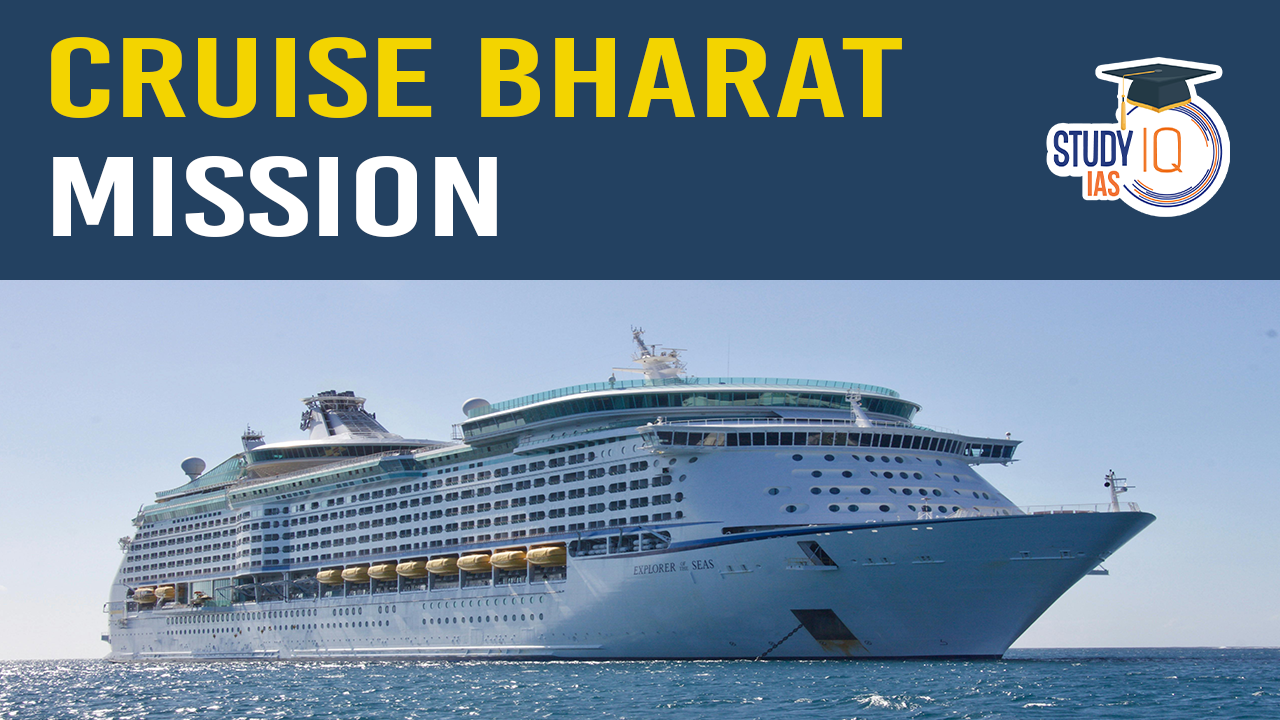Table of Contents
Objectives of Cruise Bharat Mission
The Cruise Bharat Mission is designed with specific goals that reflect the government’s commitment to enhancing cruise tourism:
- Doubling Passenger Traffic: The mission aims to double cruise passenger traffic by 2029, making India a leading player in the global cruise tourism market.
- Job Creation: The initiative is expected to generate approximately 400,000 jobs in the cruise and allied sectors, significantly contributing to employment in coastal and tourism-related industries.
- Infrastructure Expansion:
- Increase the number of international cruise terminals from 2 to 10.
- Expand river cruise terminals from 50 to 100 by the final phase of implementation.
- Grow river cruise passengers from 0.5 million in the first phase to 1.5 million by the final phase.
Phased Implementation Strategy of Cruise Bharat Mission
The Cruise Bharat Mission is structured into three phases, each with defined timelines and objectives:
Phase 1 (2024-2025)
- Market Studies: Conduct comprehensive market research to assess current trends and identify potential growth areas.
- Cruise Alliances: Form alliances with neighboring countries to promote cross-border cruise tourism, enhancing regional connectivity.
- Terminal Modernization: Upgrade existing cruise terminals and marinas to provide world-class facilities for passengers.
Phase 2 (2025-2027)
- New Terminal Development: Focus on constructing new cruise terminals and activating high-potential cruise locations and circuits.
- Infrastructure Activation: Enhance connectivity between popular tourist destinations and cruise routes, making them more accessible.
Phase 3 (2027-2029)
- Integration of Cruise Circuits: Ensure seamless integration of cruise circuits across the Indian Subcontinent for a holistic travel experience.
- Sustainable Development: Emphasize sustainable infrastructure and environmental conservation practices in cruise tourism operations.
Key Features of Cruise Bharat Mission
The Cruise Bharat Mission encompasses several strategic features aimed at ensuring its success:
- Sustainable Infrastructure Development:
- Construction of terminals, marinas, water aerodromes, and heliports that are environmentally friendly.
- Emphasis on digitalization (e.g., facial recognition for boarding) and decarbonization (e.g., shore power connections for ships).
- Operational Efficiency:
- Implementation of digital solutions such as e-clearance systems and e-visa facilities to streamline passenger processing.
- Development of a National Cruise Infrastructure Masterplan 2047 to guide long-term growth and sustainability.
- Regulatory and Financial Framework:
- Introduction of fiscal incentives to encourage private investments in cruise tourism.
- Establishment of a National Cruise Tourism Policy to provide a regulatory framework for cruise operations.
- Capacity Building and Employment Generation:
- Creation of a Centre of Excellence dedicated to cruise research and development.
- Development of National Occupational Standards specific to the cruise sector to enhance employment opportunities for the youth.
Expected Economic Impact of Cruise Bharat Mission
The Cruise Bharat Mission is expected to have a profound impact on the Indian economy, particularly in the following areas:
- Tourism Growth: With projections of cruise passengers increasing from 460,000 in 2024 to 5 million by 2047, the mission aims to significantly enhance tourism revenues and contribute to GDP growth.
- Job Creation: The projected creation of 400,000 jobs will contribute to economic stability and improve livelihoods, especially in coastal regions.
- Infrastructure Development: Investment in maritime infrastructure will not only support cruise tourism but also enhance overall maritime trade and connectivity.
- International Collaboration: By forming alliances with countries like the UAE, Maldives, and Singapore, India can boost international tourism and strengthen diplomatic ties.
Cruise Bharat Mission UPSC
The Cruise Bharat Mission represents a bold and strategic move by the Indian government to tap into the untapped potential of cruise tourism. By focusing on sustainable development, operational efficiency, and infrastructure enhancement, the mission is set to transform India’s cruise landscape, positioning the nation as a global leader in this burgeoning sector. As UPSC aspirants, understanding the implications of this mission will be crucial for comprehending India’s broader economic and tourism strategies.
Sharing is caring!


 Gestational Diabetes Mellitus (GDM), Cau...
Gestational Diabetes Mellitus (GDM), Cau...
 Topological Materials: The Future of Qua...
Topological Materials: The Future of Qua...
 China’s Deep Sea Station in South Chin...
China’s Deep Sea Station in South Chin...





















